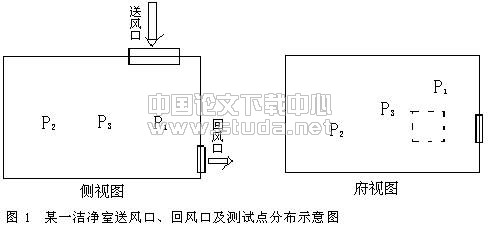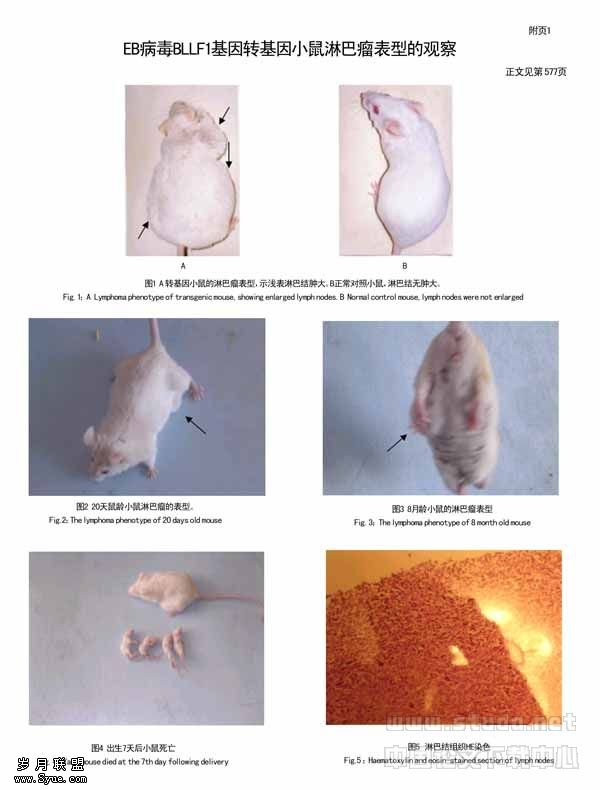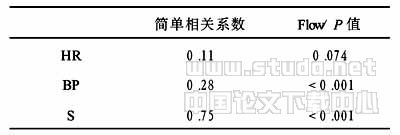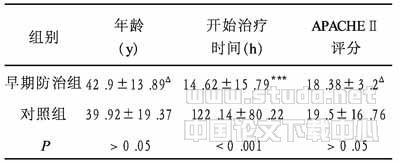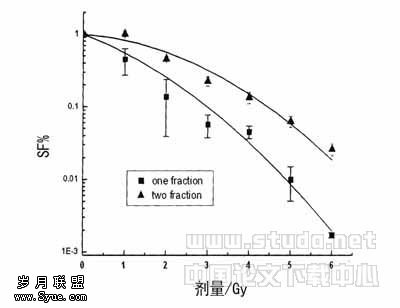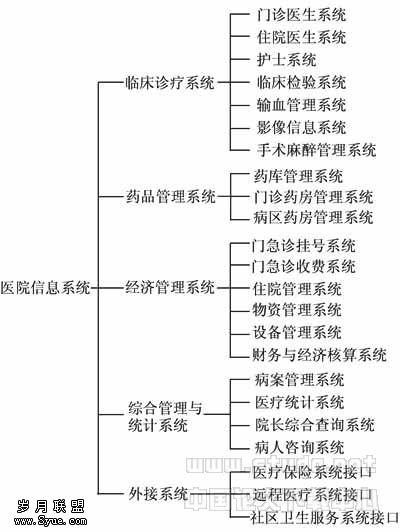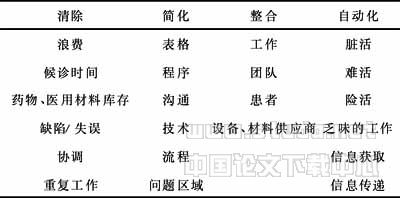2-甲氧基雌二醇对骨髓瘤细胞系CZ-1细胞诱导分化作用初探
作者:侯健,熊红,高巍然,姜华
【摘要】 本研究观察2-甲氧基雌二醇(2ME2)对骨髓瘤细胞是否具有直接的诱导分化作用。以自行建立的、能分泌λ轻链蛋白的骨髓瘤细胞系CZ-1细胞为研究对象,通过瑞氏染色观察其形态变化,用流式细胞术分析2ME2作用后细胞表面标志CD49e的表达率,采用免疫比浊法测定培养上清液中λ轻链蛋白浓度。结果表明: CZ-1细胞经0?1-0.5 μmol/L 2ME2作用72小时后细胞形态向成熟,见核浆比例降低,核仁减少或消失,染色质变得更粗糙更致密;细胞表面标志CD49e表达率明显上调,并呈浓度依赖性,与对照组比较统计学意义明显;0.1和0.5 μmol/L 2ME2处理72小时后,CZ-1细胞分泌λ轻链蛋白分别由29.3±2.77 μg/ml增至35.97±2.6 μg/ml(P<0?05)和增至79.67±1.88 μg/ml(P<0.01),显示浓度效应依赖关系。结论:较低浓度2ME2能促使CZ-1细胞向成熟阶段分化,2ME2这一作用的发现能为骨髓瘤的提供新的有效的方法。
【关键词】 骨髓瘤
Multiple myeloma (MM) is generally regarded as incurable malignancy of plasma cells,which are terminally differentiated cells of B cell lineage[1]. Up to now chemotherapy and stem cell transplantation have still been the most important therapies and improved some MM patients’ prognosis to a certain extent. It is well known that this disease mainly occurred in the el-der. Since many old patients have little chance to accept transplantation and could not endure high-dose chemotherapy because of the poor visceral function or age,it is of very important significance to explore novel,effective and safe therapy.
2-Methoxyestradiol (2ME2),once considered as an inactive end-metabolite of estradiol,has recently emerged as a very promising agent for cancer treatment[2]. Previous studies showed that it has a cytotoxic effect on various proliferating cells in vitro[3-5]. Despite being a natural derivative of estradiol (E2),
2ME2 binds poorly to the estrogen receptors (ERs),therefore its antiproliferative effects are not mediated by ERs[6]. Using xenografts and metastatic disease models in mice,it has been suggested that 2ME2 targets both the tumor cell and endothelial cell compartments by inducing apoptosis in rapidly proliferating cells and inhibiting blood vessel formation at several stages in the angiogenic cascade[7,8]. Other underlying anticancer mechanisms of 2ME2 have been suggested,including inhibition of tubulin polymerization[9,10],sulfonation of 2ME2[11],and inhibition of superoxide dismutase[12].
Previous studies showed that 2ME2 could suppress myeloma cell proliferation and induce apoptosis[13-15]. The mechanisms of inducing-apoptosis and anti-proli-feration have partially been studied,but there was little investigation about its effect on myeloma cell differen-tiation. It remained unknown whether 2ME2 exerts its effects on myeloma cells by inducing differentiation directly. In the present study,we demonstrated that 2ME2 at low concentration could induce differentiation of the myeloma cell line CZ-1,which secreted λ light chain protein and was established in our laboratory[16].
Materials and Methods
Cell Line
CZ-1,a myeloma cell line secreting λ light chain protein,was established from the bone marrow of an advanced stage MM patient classified as λ light chain type in our laboratory. By Wright’s staining,CZ-1 cells were typical of plasmablast and proplasmacyte. By histochemically staining,CZ-1 cells were positive for acid phosphatase(ACP) stain and periodic acid Schiff(PAS) stain,negative for myeloperoxidase(MPO)stain. The immunophenotypic profile of the cells showed positive for CD10,CD28,CD38,CD138,CD56,CD49d,CD54,CD58 and negative for CD19,CD40,CD95,CD95L,CD34,CD44,CD2,CD5[16].The cells were stored in liquid nitrogen,and quickly recultured upon thawing before experiments.
Reagents
Methoxyestradiol (2ME2),dimethyl sulfoxide (DMSO) and RPMI 1640 medium were purchased from Sigma (USA.). CD49e,the first mouse anti-human monoclonal antibodies,and PE-conjugated rabbit anti-mouse McAbs were purchased from Southern Biotechnology Associates Inc (USA). Anti-λ light chain antibody was purchased from Dade Behring Co. (Germany). 1 mmol/L 2ME2 (molecular weight 302.4) in DMSO was stored at 4℃,and was diluted with culture medium RPMI 1640 immediately before use. The final concentration of DMSO in the culture system was less than 0.1%,which had no significant effect on the cell growth.
Cell culture
CZ-1 cells were grown in RPMI 1640 medium supplemented with 10% heat-inactive fetal calf serum,100 U/ml penicillin,100 μg/ml streptomycin and 2 mmol/L L-glutamine in a 37℃,5% CO2 humidified atmosphere. The cells in logarithmic growth phase were used in all experiments.
Morphology evaluation and staining procedures
After being cultured in the medium containing 2ME2,the cells were prepared on slides,stained with Wright’s stain and distilled water in proportion as 1∶1 for 5 minutes,flushed with water,air-dried and then observed under light microscope,taken photos with Hunter Imaging System (China).
Differentiation antigen presentation on cell surface
The logarithmic growth phase cells were collected,centrifuged and suspended in RPMI 1640,cocultured with 2ME2 at a series of concentrations with 0,0.1,0.2,0.5 μmol/L for 72 hours. The cells were harvested (0.2% trypan blue staining showed that the survival rate was more than 95%),washed with PBS (pH 7?4) and adjusted to 1×106/ml. 100 μl cell suspension was moved into a FCM tube for each test,incubated with mouse anti-human monoclonal antibodies CD49e (5 μg/ml) for 30 minutes at 4℃,washed twice with PBS,and labelled with PE-conjugated rabbit anti-mouse McAbs (20 μg/ml) for 30 minutes in dark at 4℃. After washing twice with PBS,the labeled cells (a minimum of 10 000 cells per sample) were analyzed by flow cytometry and Cellquest 1.2 software. In each test,an irrelevant McAb of the same isotype was used as a negative control. The value of individual negative group was subtracted from that of each experiment group. All tests were performed in triplicate and were duplicated for three times.
Determination of immunoglobulins in cell culture supernatant
After being treated with 2ME2,the cells were collec-ted,and then centrifugated. The supernatant was put into filter bag,condensed 10 times with 20% polyglycol. Quatitative assay of λ light chain protein was performed with immuno-scattering turbidity method by BN Prospec(Dade Behring Co.,Germany).All tests were duplicated for three times.
Statistical analysis
All statistical calculations were performed with the statistical software program SPSS ver.10.0. The experimental data were presented in average±standard deviation (x±SD). Differences between each group were evaluated by one-way analysis of variance (ANOVA). The difference was of statistical significance,when P<0?05.
Results
Influence of 2ME2 on CZ-1 cells morphology
CZ-1 cells used in this study presented morphologic features of plasmablast,with a small quantity of cytoplasma and a high karyoplasmic ratio. Some of them had obvious nucleoli and fine nuclear chromatin. Following treatment with 0.1 μmol/L 2ME2,CZ-1 cells displayed some maturing morphological changes,including the ratio of karyoplasms going down,nucleolus reducing or disappearing,chromatin getting rougher and compacted. When the concentration of 2ME2 was increased to 0.5 μmol/L,the cells morphologic changes were more remarkable,showing typical basic and abundant cytoplasma. Some had eccentric nucleus,rough and agglomerated chromatin,presenting deep chromatosis and being arrayed in wheels. These maturing morphologic changes of plasma cells were obviously different from early apoptosis (Figure A-C). Meanwhile,these cells have not characteristic changes of apoptosis by TUNEL assay (data not shown). These results demonstrated that 2ME2 at 0.1-0.5 μmol/L induced CZ-1 cell morphological differentiation,but no apoptosis.
Influence of 2ME2 on the CD49e expression on the CZ-1 Cells
Treating with 0.1-0.5 μmol/L 2ME2,the expression of CD49e on the CZ-1 cell surface was up-regulated in a concentration-dependent manner in comparison with the control group (4.65%). CD49e positive cells in 0.1,0.2 and 0.5 μmol/L 2ME2 treated group reached to 12.20%,14.75% and 24.5%,respectively. The CD49e expression in each group was significantly higher than that in control group (P<0.01)(Table),which suggested that 2ME2 can obviously induce CZ-1 cell differentiation with the increase of the drug concentration.
Influence of 2ME2 on the λ light chain protein secretion by CZ-1 cells
Treatment with 2ME2 increased the secretion of light chain protein by CZ-1 cells. Following treatment with Table . Influence of 2ME2 on the CD49e expression and the secretion of light chain protein from the CZ-1 cells (略)
Discussion
Plasma cells develop and differentiate from B-lymphocytes. The morphology of myeloma cells is similar to that of normal plasma cells,and the normal plasma cell antigens such as CD38,PC-1,PCA-1 are also observed on myeloma cells. Although MM was a malignancy of the terminally differentiated B cells,the myeloma cells could further be classified into mature and immature groups[17]. 20 cases of MM patients were detected by flow cytometry using two-color fluorescence[17]. It was reported that the cells from 8/20 MM patients were CD38+CD49e-,classified to immature myeloma cells according to Greipp’s classification[18],the cells from other 12 MM patients were CD38+CD49e+,belonging to mature myeloma cells.
It was presumed that myeloma cells were from malignant transformation of normal plasma cells in the past. With the development of immunology and molecular biology,new knowledge of the origin of myeloma cells was acquired. Numerous findings confirmed that precursors of B cells existed in the peripheral blood and bone marrow of MM patients. When B cells diffe-rentiated into plasma cells under the antigenic stimuli,the related antigens of B cells such as HLA-DR,CD19,CD20 were lost and the special antigen of plasma cells such as CD38 were gained. During the further differentiation of plasma cells,CD45 was lost gradually,and MPC-1 and VLA-5 (very late antigen-5,i.e. CD49e) were gained gradually. Similar regularity of differentiation was found on myeloma cells[19].
In regard to the mature of plasma cells,Ishikawa [20] proposed that B cells activated by antigens in the germinal center of folliculus lymphaticus differentiated into plasma cell precursors,which could emerge in the peripheral blood with the morphology of lymphoid plasma cells of meager cytoplasm. The immunophenotype on the plasma cell precursors showed CD38-MPC-CD49e-. And then these cells homed to bone marrow and matured through the following 3 stages. First,the immunophenotype of the cells was CD38+++MPC-1-CD49e-,and the cell morphology appeared to be plasmablast with obvious nucleoli. Second,the immunophenotype of the cells was CD38+++MPC-1-CD49e-,and the cell morphology appeared to be intermediate plasma cells. Finally,the immunophenotype of the cells was CD38+++MPC-1-CD49e+,and the cell morphology appeared to be mature plasma cells with the characteristic of plentiful cytoplasm. The neoplastic cells of MM patients were a colony of these three stages cells in a various proportion.
In vitro experiments showed that during the deve-lopment of myeloma cells,those cells with CD49e- displayed immaturity in the morphology,and had proliferative response to IL-6,and could be observed in bone marrow and peripheral blood[21]. CD49e+ myeloma cells were mature cells and located in bone marrow with low proliferative activity,and had no proliferative response to IL-6. But they could secrete more M protein than CD49e- myeloma cells. It was reported that more M protein was secreted when the myeloma cells differentiated into mature stage.
When PD173074,an inhibitor of fibroblast growth factor receptor 3,was investigated in myeloma cells,it was found that low-dose of PD173074 could induce MM cell lines KSM11 and KMS18 to present the morphologic changes of cell differentiation and maturation,such as nucleus decreasing,plasma increasing,the karyoplasmic ratio going down,nucleolus decreasing or disappearing,chromatin getting rougher and more pykno-tic. Further investigation using ELISA was to quantify immunoglobulin in the culture supernatant. The results indicated that light protein secreted by KSM11 and KMS18 cells increased from 10 μg/ml to 20 μg/ml while the morphological changes of the differentiation appeared[22].
Thus CD49e and secretion of light protein were the signs of myeloma cell development and maturation. Therefore,we selected them as the objective criteria to determine whether the myeloma cells differentiated and mature or not.
CZ-1 cells established from a λ light chain type MM patient showed morphologic features of blast cells,such as high karyoplasmic ratio,1-2 nucleoli and rare nuclear chromatin,sometimes abnormal nucleus,abundant and opaque cytoplasm stained to deep blue. In the present study,CZ-1 cells appeared to develop into mature cells,showing the ratio of karyoplasms going down,nucleolus reducing or disappearing,chromatin getting rougher and compacted. These results demonstrated that 2ME2 at these low concentrations induced morphological differentiation and maturation of CZ-1.
In the present study,following treatment with low-concentration 2ME2 (0.1-0.5 μmol/L),the expression of CD49e on CZ-1 cell surface and the secretion of λ light chain protein increased obviously,corresponding to the regularity of the maturation of myeloma cells. In addition to the morphological changes of maturation,we inferred that 2ME2 at low-concentration produced obvious effect of inducing differentiation on myeloma cells,CZ-1. This could be a novel anti-myeloma mechanism of 2ME2,which has not been reported before. 2ME2 might have the clinical potential as a differentiation inducer to treat the patients. Further stu-dies are needed to elucidate the mechanisms of the myeloma cell differentiation induced by low-concentration 2ME2.
【】
1Dalton WS,Bergsagel PL,Kuehl WM,et al. Multiple myeloma. Hematology (Am Soc Hematol Educ Program),2001;157-177
2Pribluda VS,Gubish ER Jr,Lavallee TM,et al. 2-Methoxyestradiol: an endogenous antiangiogenic and antiproliferative drug candidate. Cancer Metastasis Rev,2000;19: 173-179
3Shang W,Konidari I,Schomberg DW. 2-Methoxyestradiol,an endogenous estradiol metabolite,differentially inhibits granulosa and endothelial cell mitosis: a potential follicular antiangiogenic regulator. Biol Reprod,2001;65: 622-627
4Dubey RK,Gillespie DG,Zacharia LC,et al. Methoxyestradiols mediate the antimitogenic effects of estradiol on vascular smooth muscle cells via estrogen receptor-independent mechanisms. Biochem Biophys Res Commun,2000;278: 27-33
5Banerjeei SK,Zoubine MN,Sarkar DK,et al. 2-Methoxyestradiol blocks estrogen-induced rat pituitary tumor growth and tumor angiogenesis: possible role of vascular endothelial growth factor. Anticancer Res,2000;20: 2641-2645
6Lavallee TM,Zhan XH,Herbstritt CJ,et al. 2-Methoxyestradiol inhibits proliferation and induces apoptosis independently of estrogen receptors alpha and beta. Cancer Res,2002;62: 3691-3697
7Klauber N,Parangi S,Flynn E,et al. Inhibition of angiogenesis and breast cancer in mice by the microtubule inhibitors 2-methoxyestradiol and taxol. Cancer Res,1997;57: 81-86
8Fotsis T,Zhang Y,Pepper MS,et al. The endogenous oestrogen metabolite 2-methoxyoestradiol inhibits angiogenesis and suppresses tumour growth. Nature,1994;368(6468): 237-239
9Cushman M,He HM,Katzenellenbogen JA,et al. Synthesis,antitubulin and antimitotic activity,and cytotoxicity of analogs of 2-methoxyestradiol,an endogenous mammalian metabolite of estradiol that inhibits tubulin polymerization by binding to the colchicine binding site. J Med Chem,1995;38: 2041-2049
10D’Amato RJ,Lin CM,Flynn E,et al. 2-Methoxyestradiol,an endogenous mammalian metabolite,inhibits tubulin polymerization by interacting at the colchicine site. Proc Natl Acad Sci USA,1994;91: 3964-3968
11Spink BC,Katz BH,Hussain MM,et al. SULT1A1 catalyzes 2-methoxyestradiol sulfonation in MCF-7 breast cancer cells. Carcinogenesis,2000;21: 1947-1957
12Huang P,Feng L,Oldham EA,et al. Superoxide dismutase as a target for the selective killing of cancer cells. Nature,2000;407(6802): 390-395
13Chauhan D,Li G,Sattler M,et al. Superoxide-dependent and -independent mitochondrial signaling during apoptosis in multiple myeloma cells. Oncogene,2003;22: 6296-6300
14Chauhan D,Li G,Auclair D,et al. Identification of genes regulated by 2-methoxyestradiol (2ME2) in multiple myeloma cells using oligonucleotide arrays. Blood,2003;101: 3606-3614
15Chauhan D,Li G,Hideshima T,et al. Blockade of ubiquitin-conjugating enzyme CDC34 enhances anti-myeloma activity of Bortezomib/Proteasome inhibitor PS-341. Oncogene,2004;23: 3597-3602
16Hou J,Lin FY,Zhang B,et al. Establisment and biological characteristics of human multiple myeloma cell line CZ-1. Chin Med J (Engl),2004;117: 115-119
17Harada H,Kawano MM,Huang N,et al. Phenotypic difference of normal plasma cells from mature myeloma cells. Blood,1993;81: 2658-2663
18Greipp PR,Raymond NM,Kyle RA,et al. Multiple myeloma: significance of plasmablastic subtype in morphological classification. Blood,1985;65: 305-310
19Van-Riet I,Van-Camp B. The involvement of adhesion molecules in the biology of multiple myeloma. Leuk Lymphoma,1993;9: 441-452
20Ishikawa H,Kawano MM. Biological significance of heterogeneity in human myeloma cells. Int J hematol,1998;68:363-370
21Kawano MM,Huang N,Harada H,et al. Identification of immature and mature myeloma cells in the bone marrow of human myelomas. Blood,1993;82: 564-570
22Trudel S,Ely S,Farooqi Y,et al. Inhibition of fibroblast growth factor receptor 3 induces differentiation and apoptosis in t(4;14) myeloma. Blood,2004;103: 3521-3528
